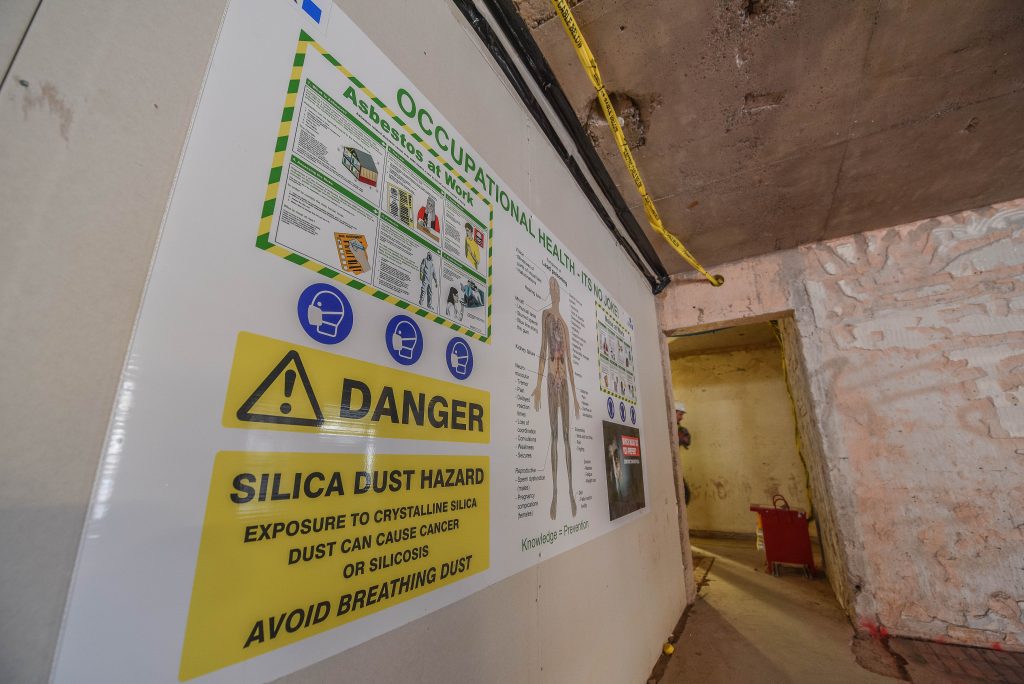Top Five Safety Breaches When Working at Height
2nd October 2018
One of Simian’s core services is scaffold inspection and that means our team is out and about, day-after-day, across the length and breadth of the UK checking over scaffolds of all shapes and sizes.
The inspection work we carry out includes pre-handover inspection, base lift inspection (if it’s wrong at the bottom, it’s usually wrong all the way to the top!), weekly (statutory) inspection and ad-hoc (usually monthly) reassurance inspections.
The very nature of what we do means we get to see some fantastic scaffolds and also some that don’t quite make the grade, and which could attract the unwanted attention of the enforcing authorities, or even worse – pose an unwanted and unnecessary risk to scaffold users.
We though it would be interesting to share the most common breaches, along with a few expert tips and so asked our Inspectors and Advisors to share their findings with us!
Number Five – Missing Braces
Propping the rest up down at number five is the issue of ledger bracing! Often omitted for access purposes, ledger bracing is integral in a scaffold’s structural stability. Our Inspectors find that it’s often removed by trade contractors who seek to have unimpeded access around the scaffold!
Top Tip – Ledger bracing can only be omitted if the scaffold has been designed by calculation, and the TG20 eGuide can provide a compliance sheet for omission of braces, so long as certain conditions are met.
Number Four – SG4 Compliance
Down at number four is the issue of SG4 compliance and the observations that Simian make are generally related to incomplete safe zones. SG4:15 requires that scaffolders work from fully boarded and fully transomed lifts, with a minimum of a single guardrail at a height of at least 950 mm.
Top Tip – Working from a three board wide platform is now longer acceptable and Scaffolders should be encouraged to fully board their platform.
Number Three – TG20 Compliance
A fairly consistent number three is TG20 compliance. As all Scaffolders should now be aware, the Work at Height Regulations require that all scaffolds be erected in accordance with a generally recognised standard configuration (i.e. TG20 or manufacturer’s instructions for system scaffolds) or, be designed by calculation. All too often, we see scaffolds that fall into neither category, and while this doesn’t always have a direct impact on the overall safety of the scaffold, it does place the Main Contractor and the scaffolding contractor at risk of enforcement action.
Top Tip – Any modifications that take a scaffold beyond the scope of a TG20 compliance sheet should be authorised by an Engineer!
Number Two – Damaged Ladders
Number two is the case of the damaged ladder. Even the smallest amount of damage to a ladder can attract the attention of the enforcing authorities, who have been known to issue Notices of Contravention for any such discrepancies, as several of our clients can attest to. Ladders (as with all work at height equipment) must be free from damage and in a serviceable condition.
Top Tip – Ladders should form a part of the weekly scaffold inspection regime and any showing signs of damage, i.e. bent rungs or missing rubber feet, should be replaced without delay!
Number One – Gaps in Platforms
Looking down on the rest, number one is gaps in scaffold platforms. Whilst these are rarely of any great size, they do belie the fact the TG20 allows gaps in platforms of up to 50mm only – commonly known as a ‘service gap’ and this allows a standard to pass through a working platform.
Top Tip – Gaps larger in size than 50mm should be prevented and can be covered with a plywood filler, though there are also several varieties of gap fillers available on the market.
